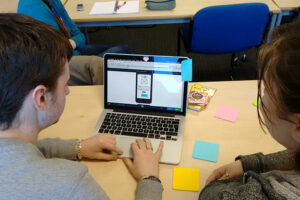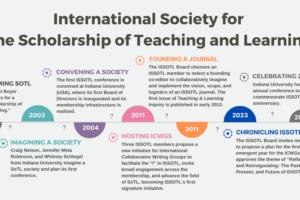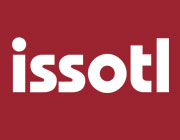2017 Scholarship of Leading Update
2017 (Calgary) ISSOTL SCHOLARSHIP OF LEADING : SPECIAL INTEREST GROUP (SoL SIG)
(facilitated by SoL SIG Co-Chairs, Carol Rolheiser and Angela Carbone)
Agenda
- Welcome & Introductions
- Mission Statement of Scholarship of Leading: Special Interest Group (SoL SIG)Committed to pursuing scholarly work on the relationships between leading, teaching and learning, this interest group’s mission is to create opportunities for dialogue, to promote scholarly research on the topic, and to provide support to ISSoTL members interested in and engaged in leadership.
- Expression of Interests among SoL SIG participants
- Review findings from SoL SIG survey
- Discussion regarding: What is the “Scholarship of Leading?”, what stands out for you?
- Collect contact details for continued networking
Survey Findings
- Scholarship of Leading Pre-Survey Results
- SoL SIG participants’ Interests and perceptions of “Scholarship of Leading”
Leadership Papers
- Dugan, J. P. (2017). Leadership theory: Cultivating critical perspectives. John Wiley & Sons.An interdisciplinary survey text on leadership theory grounded using critical perspectives. Leadership Theory is designed specifically for use in undergraduate or graduate classrooms providing a comprehensive overview of essential theories informing the leadership studies knowledge base.
- Lieff, S. J., & Yammarino, F. J. (2017). How to lead the way through complexity, constraint, and uncertainty in Academic Health Science Centers. Academic Medicine, 92(5), 614-621.In this Article, the authors propose that Academic Heath Science Centres (AHSCs) will require a unique combination of old and new leadership approaches specifically oriented to the unique complexity of the AHSC context. The authors highlight and explore some of these new approaches—the authentic, self, shared, and network approaches to leadership.
- Boyer, E. L. (1990). Scholarship reconsidered: Priorities of the professoriate. Princeton University Press, 3175 Princeton Pike, Lawrenceville, NJ 08648.This report on the professoriate in American higher education explores how the use of faculty time is rewarded and, especially, what activities of the professoriate are most highly prized. Changes in the work of higher education institutions through the years–its movement from teaching to service and then research, are noted, as are conflicts resulting from institutions attempting to achieve competing goals. Concern is raised regarding the emphasis on research and publication for academic advancement. Four general views of scholarship are proposed: discovery, integration, application, and teaching. Institutions are encouraged to stress their unique qualities and strengths, and to reconsider the narrowness of the faculty reward system.
Next Steps
- Call for cases on
- What Educational Leadership looks like?
- How are Educational Leaders leading or inluencing others?
Attendees
Name, Universities
- Carol Rolheiser (Co-Chair),University of Toronto
- Angela Carbone (Co-Chair), Swinburne University of Technology
- Chng Huang Hoon, National University of Singapore
- Johan Geertsema, National University of Singapore
- Katarina Mårtensson, Lunds University
- Torgny Roxå, Lunds University
- Sue Morón-García, University of Central Lancashire
- Melanie Hamilton, Lethbridge College
- Erin Macnab, University of Toronto
- Megan Burnett, University of Toronto
- Julia Evanovitch, McMaster University
- Melec Zeadin, McMaster University
- Miriam Carey, Mount Royal University
- Briony Supple, University College Cork
- Mirari Ayerbe, UPV / EHU
- Nicola Simmons, Brock University




